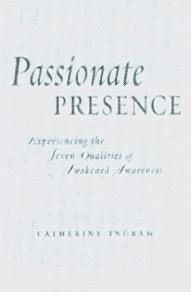 The Practice of Dzogchen
The Practice of Dzogchen
Longchen Rabjam
Ithaca, NY: Snow Lion Publications, 2002
488 pp.; $34.95 (cloth)
Written by Longchen Rabjam (1308-1363), the celebrated adept of the Nyingma sect of Tibetan Buddhism, The Practice of Dzogchen is an anthology of writings on the esoteric philosophy of Dzogchen. At the heart of this tradition is a meditative practice aimed at unraveling the layers of emotion and intellect to reveal the essential nature of the mind. Part I introduces Dzogchen practice and gives an account of Longchen Rabjam’s life, while Part II provides an anthology of translations of his writings with commentary and clarifications by Tibetan teacher Tulku Thondup Rinpoche.
Friends on the Path: Living Spiritual Communities

Thich Nhat Hanh
Berkeley: Parallax Press, 2002;
307 pp.; $18.00 (paper)
Practicing with a sangha is an important part of the Buddhist path, that, according to Thich Nhat Hanh, becomes even more so in a world of war and conflict, where building community is essential for building peace. This book offers a selection of writings on the modern concept of sangha by Buddhist teachers from varied traditions. The essays address life in residential as well as nonresidential communities and cover topics such as Engaged Buddhism, practicing with children, vows, ceremonies, and practical insights for building and sustaining a contemporary sangha.
 Why Buddhism? Westerners in Search of Wisdom
Why Buddhism? Westerners in Search of Wisdom
Vicki Mackenzie
London: Thorsons, 2003;
304 pp.; $19.95 (cloth)
Vicki Mackenzie, author of the bestselling A Cave in the Snow, explores the question of why Buddhism is the fastest-growing religion in the West. Mackenzie interviews extraordinary Buddhists to discover why they turned to Buddhism and how they incorporate its philosophy into their lives and work. Among her subjects are Sharon Salzberg, Stephen Batchelor, Philip Glass, and Robert Thurman, as well as a mother, a diamond merchant, a female lama, and a terminal cancer patient. What emerges from their stories is an illuminating portrait of the Western response to the Buddhist path.
 The Hope Valley Hubcap King
The Hope Valley Hubcap King
Sean Murphy
New York: Dell Publishing 2002;
224 pp.; $5.99 (paper)
Inspired by Sean Murphy’s fifteen-year Zen practice, this first novel won the International Hemingway Award for unpublished fiction. It tells the story of a young man, Bibi Brown, who sets out in search of his Uncle Otto, an eccentric junk collector living on the elusive Hope Valley Hubcap Ranch and the only male member of the Brown family in twelve generations not to have committed suicide. On his quest, Bibi careens through Murphy’s off-kilter world of eccentrics, searching for a still point of hope and meaning—which he discovers, unexpectedly, in the wabi sabi beauty of a shining hubcap.
 The Wild, White Goose: The Diary of a Female Zen Priest
The Wild, White Goose: The Diary of a Female Zen Priest
Rev. Roshi P. T. N. H. Jiyu-Kennett
Mt. Shasta, CA: Shasta Abbey Press, 2002;
640 pp. $24.95 (paper)
Originally published in two volumes, this book presents the diaries of Roshi Jiyu-Kennett (1924-1996), one of the first Western women to become a Zen master. After a grueling training period in one of Japan’s leading monasteries, Roshi Jiyu-Kennett finally received dharma transmission and graduated as a full priest. She insists, however, that the critical stage of Zen training really occurs in the transition from Zen priest to the outside world: “Training must be done in the ‘mud’ of daily life in order to grow straight and strong the stem of the lotus flower of [one’s] own spirituality.”
 Passionate Presence: Experiencing the Seven Qualities of Awakened Awareness
Passionate Presence: Experiencing the Seven Qualities of Awakened Awareness
Catherine Ingram
New York: Gotham Books 2003; 240 pp.; $24.00 (cloth)
In the face of global consumerism, Catherine Ingram argues, we are left dissatisfied in our search for meaning. Ingram, a cofounder of the Insight Meditation Society in Barre, Massachusetts, proposes the idea of “awakened intelligence”—a practice of silence and deep relaxation that effects a more fulfilling connection with everyday life. Using personal anecdotes, Ingram shares her advice on how to cultivate the seven aspects of what she terms “passionate presence”—silence, tenderness, discernment, embodiment, authenticity, delight, and wonder.
 You Have the Right to Remain Silent: Bringing Meditation to Life
You Have the Right to Remain Silent: Bringing Meditation to Life
Rick Lewis
Prescott, AZ: Hohm Press 2002;
168 pp.; $14.95 (paper)
Writer and entertainer Rick Lewis brings humor and accessibility to meditation practice for the nonmonastic Western practitioner. Despite chapter titles such as “Benediction: Faster than a Speeding Mind,” “The Mind as Salesman,” and “Look, Ma, No I,” Lewis encourages readers to take a rigorous approach to meditation practice and warns that there is no “quick fix” for cultivating a lifestyle of grace and presence. Emphasizing the body as the foundation for mindfulness, he leads readers toward the simple enjoyment to be found in sitting practice as well as in a life of presence.
 Turning the Mind into an Ally
Turning the Mind into an Ally
Sakyong Mipham
New York: Riverhead, 2003;
256 pp.; $23.95 (cloth)
Do you ever feel that your mind is its own worst enemy? In his first book, Sakyong Mipham, son and dharma heir of Chögyam Trungpa Rinpoche, teaches us how to make our minds our allies, insisting that “before we go on any kind of spiritual quest, we have to establish fundamental sanity by training the mind.” This process begins, he explains, by examining what exactly our mind is and how it works. Once we learn to do this through meditative practice, our minds become soft and fertile, and compassion and wisdom, clarity and fearlessness, can take root and flourish.
Thank you for subscribing to Tricycle! As a nonprofit, we depend on readers like you to keep Buddhist teachings and practices widely available.